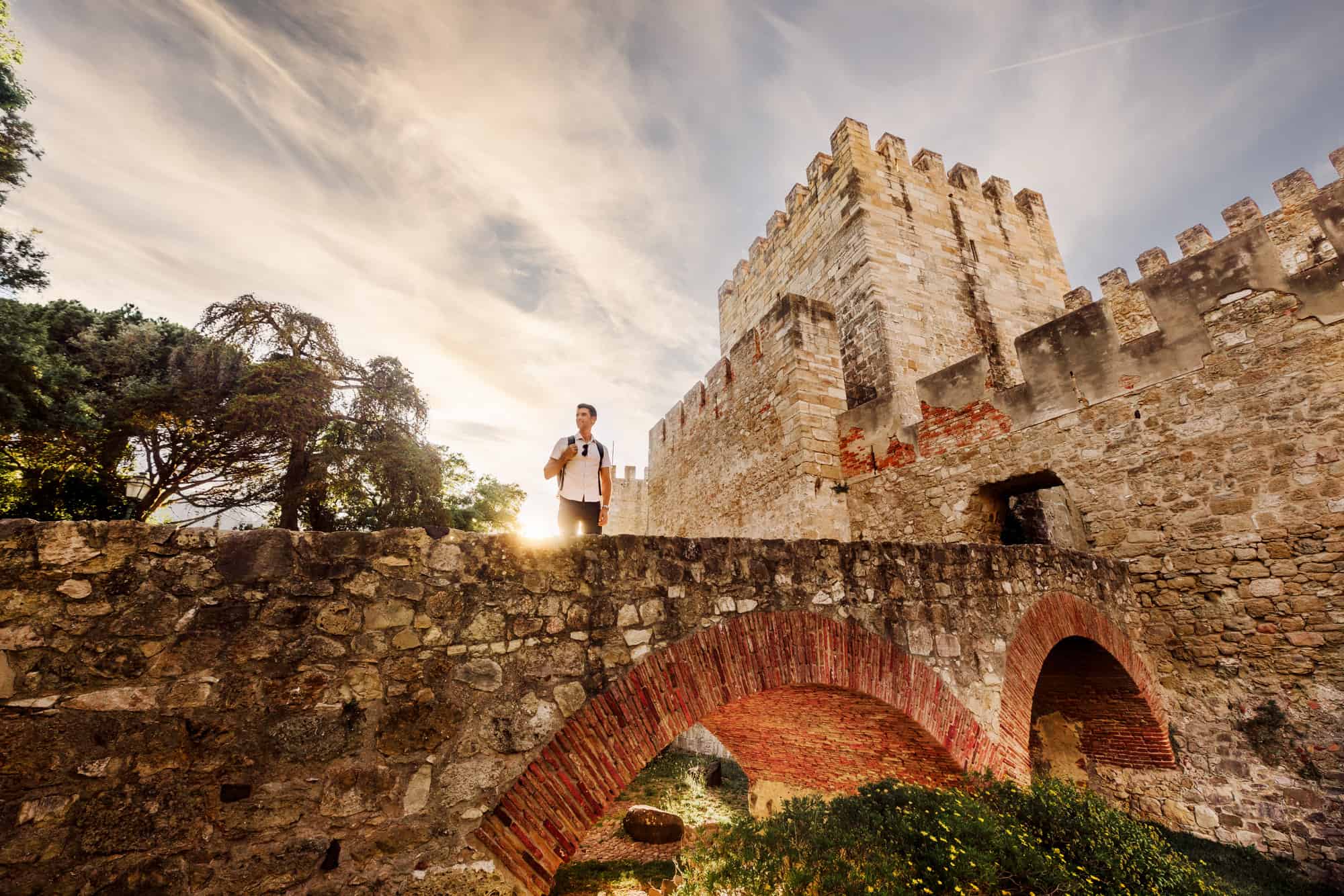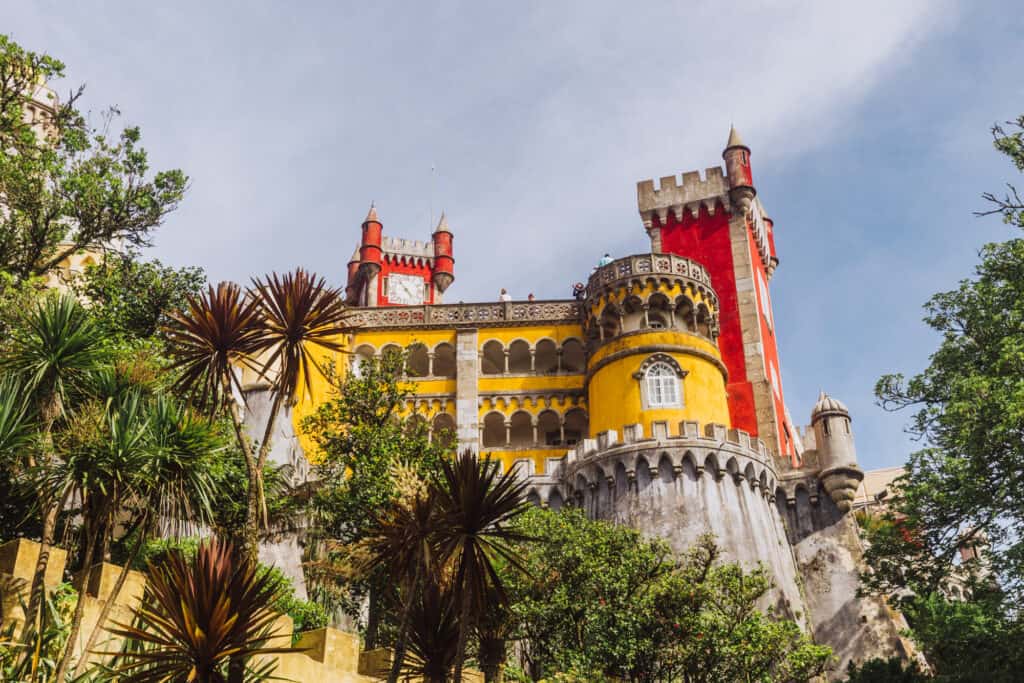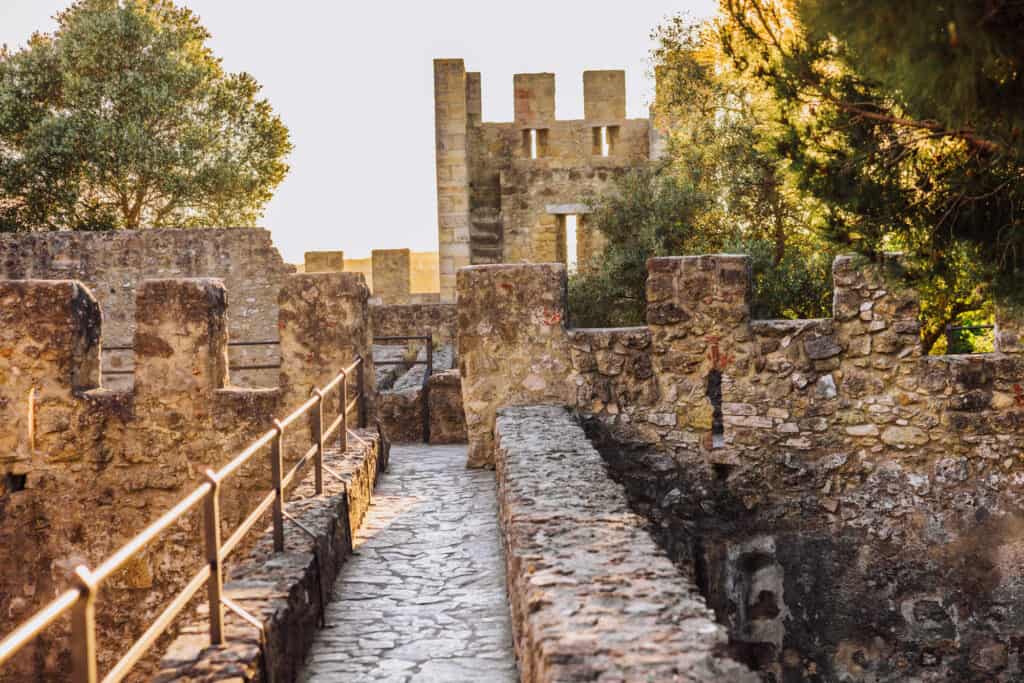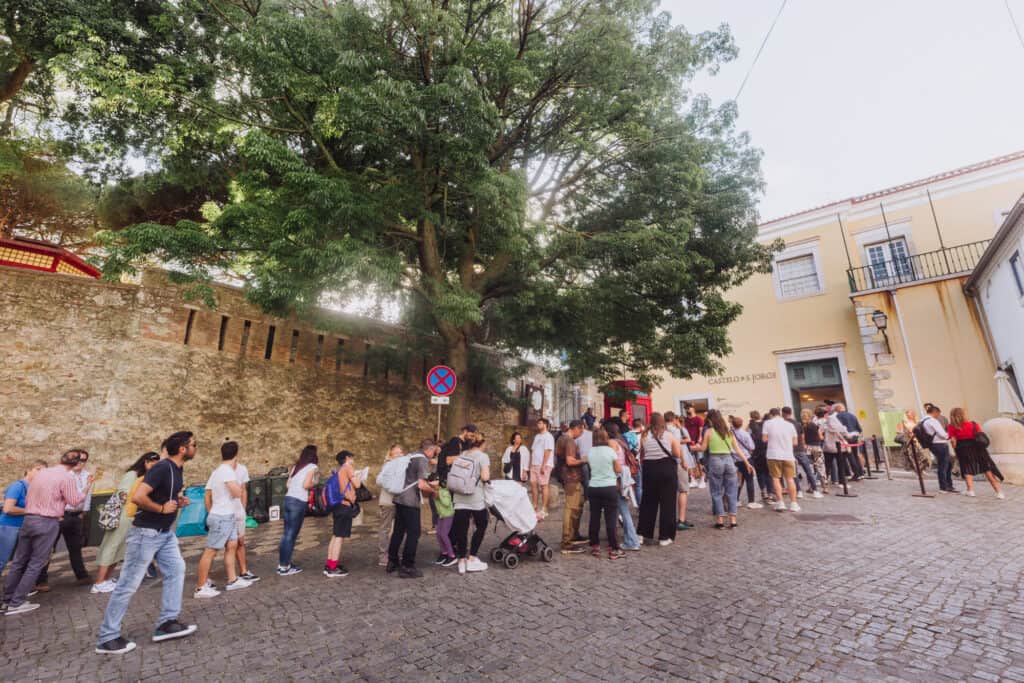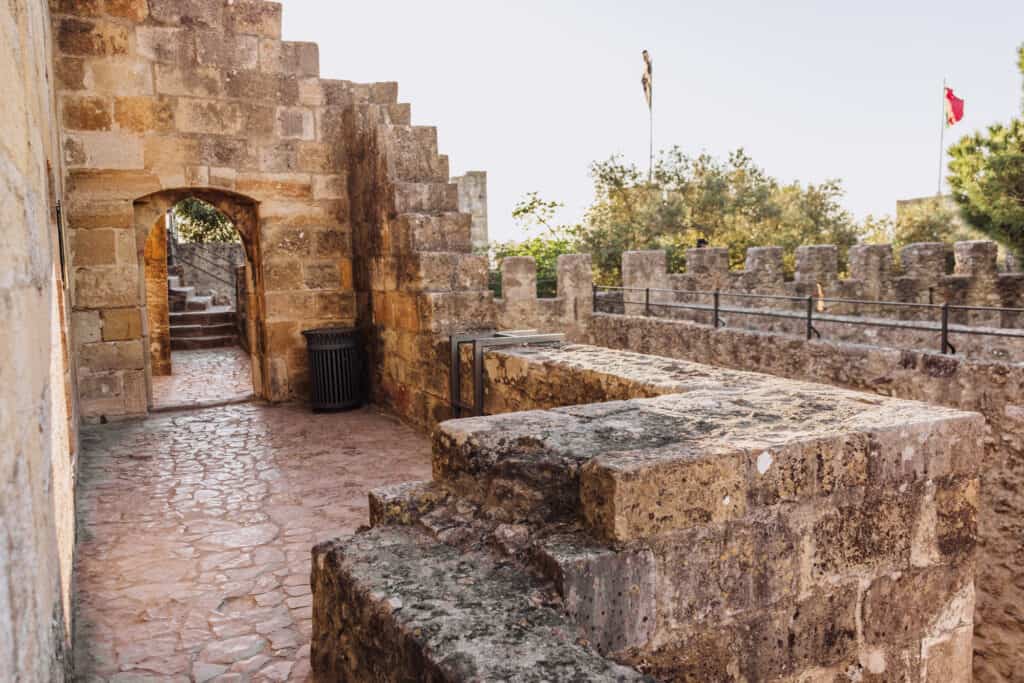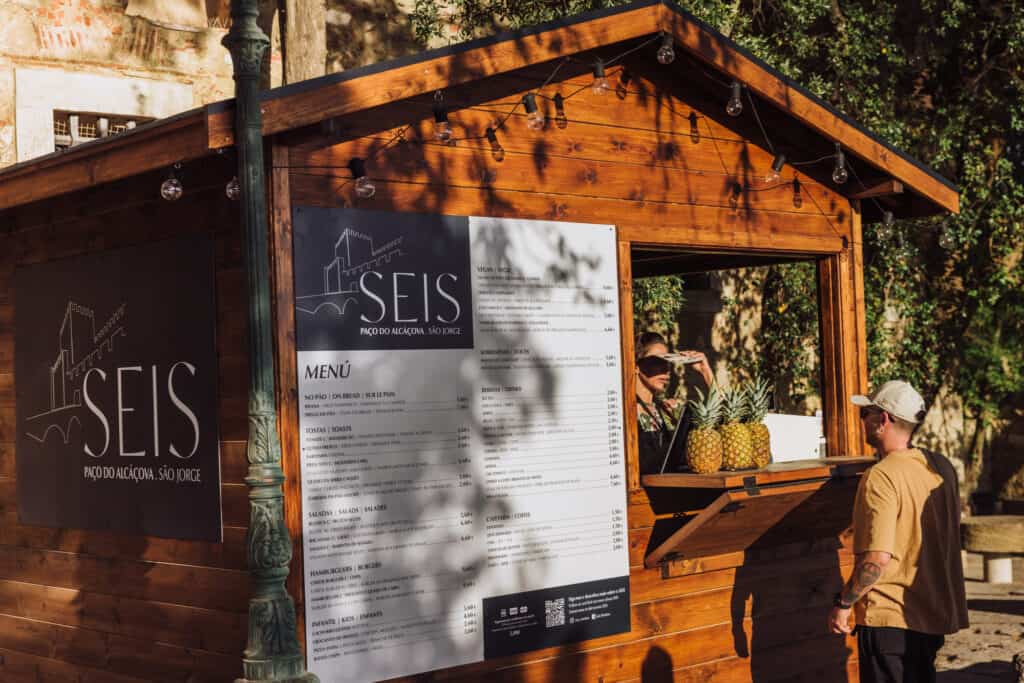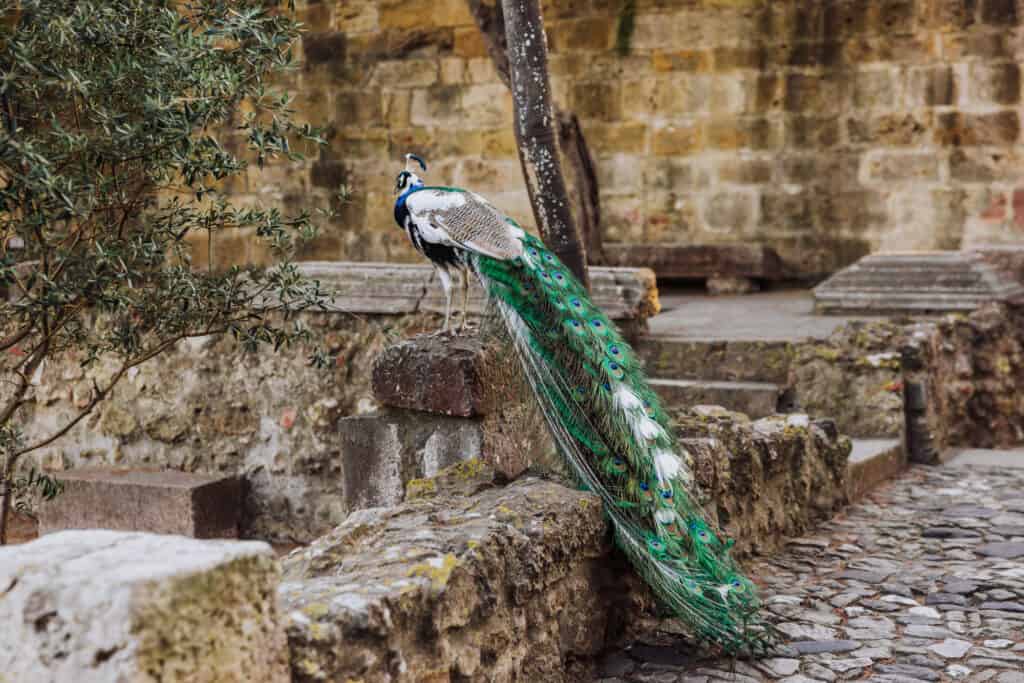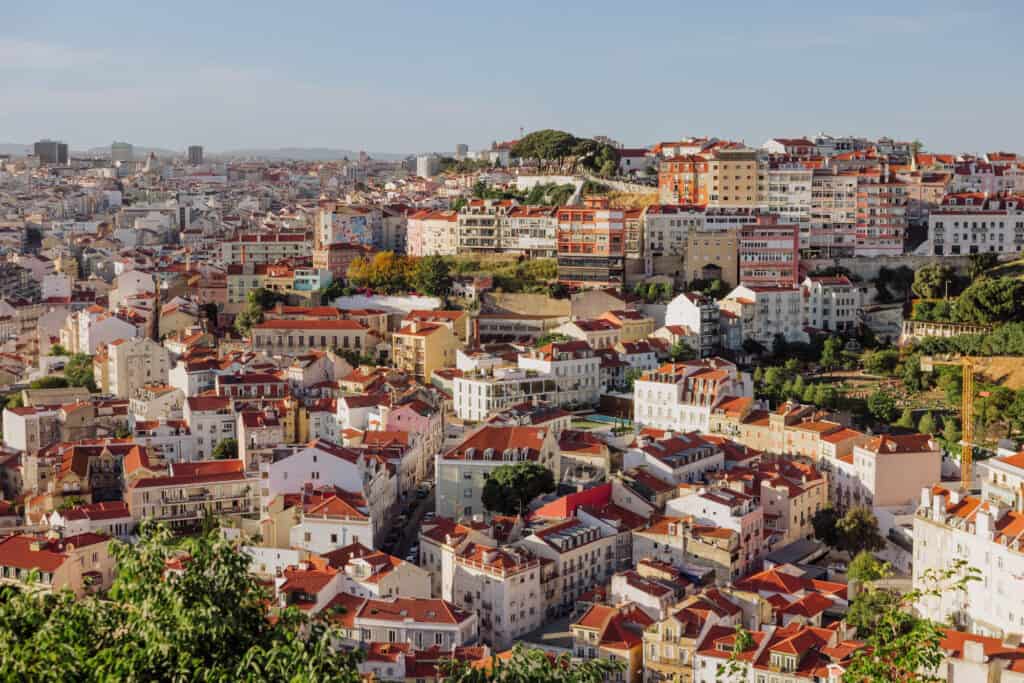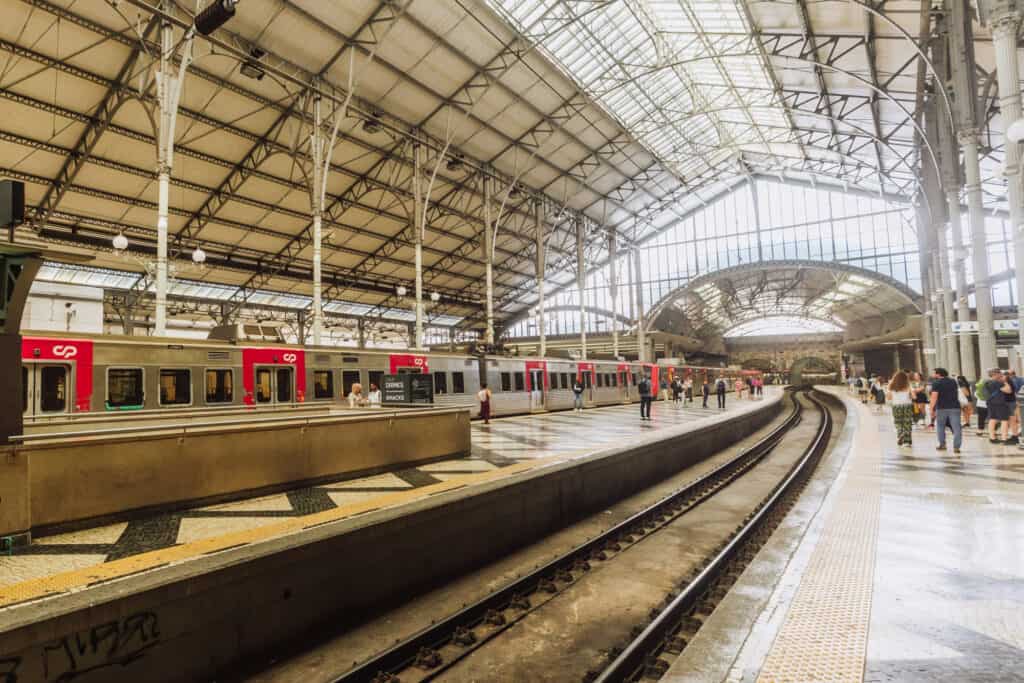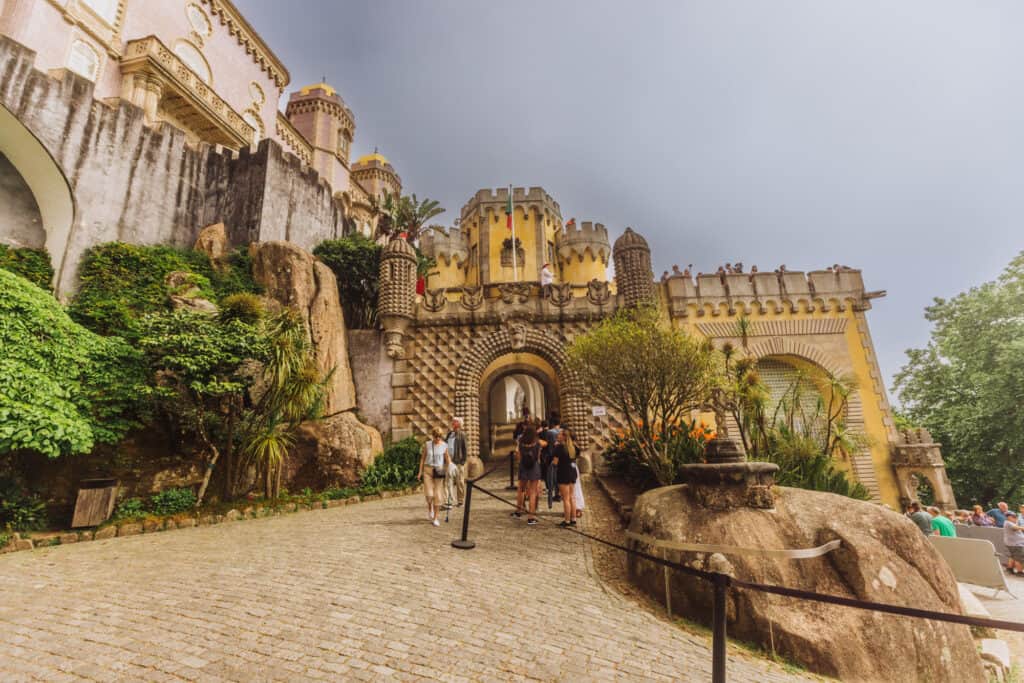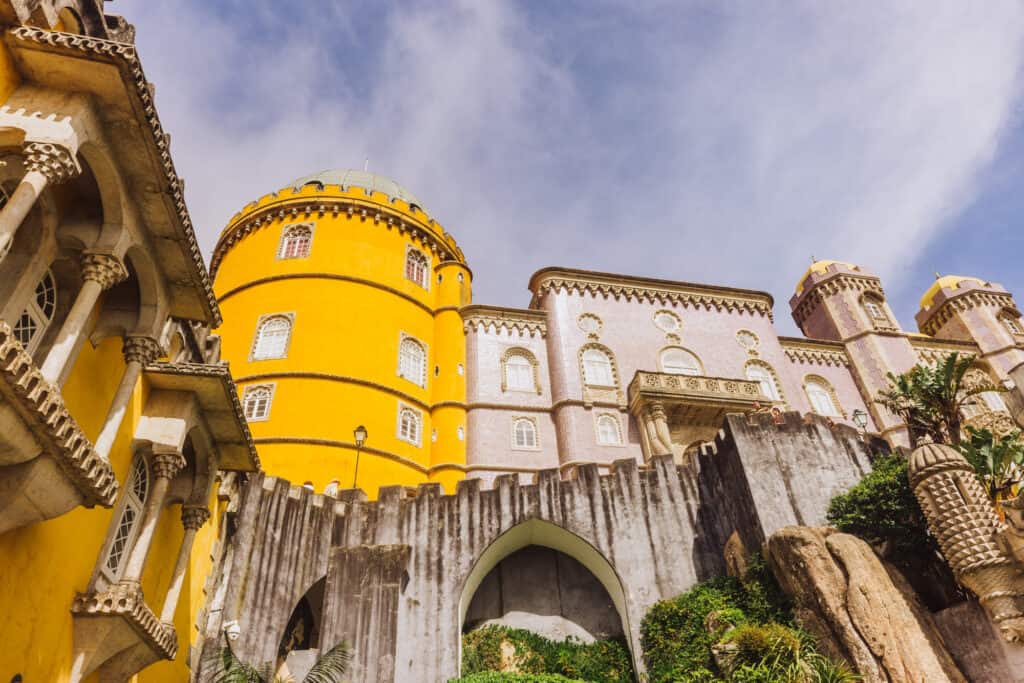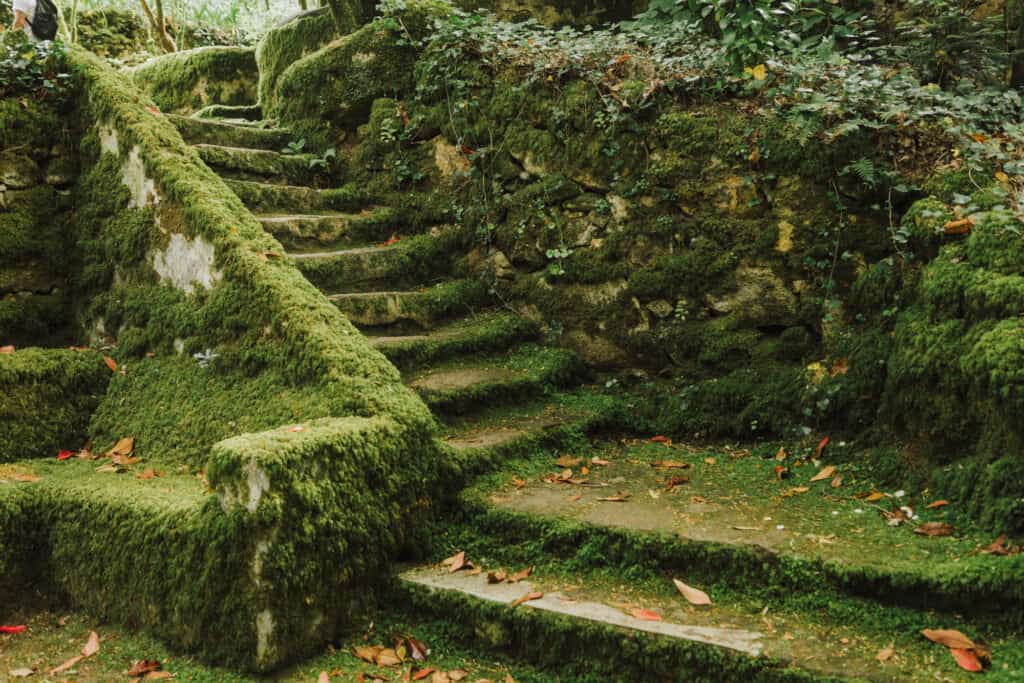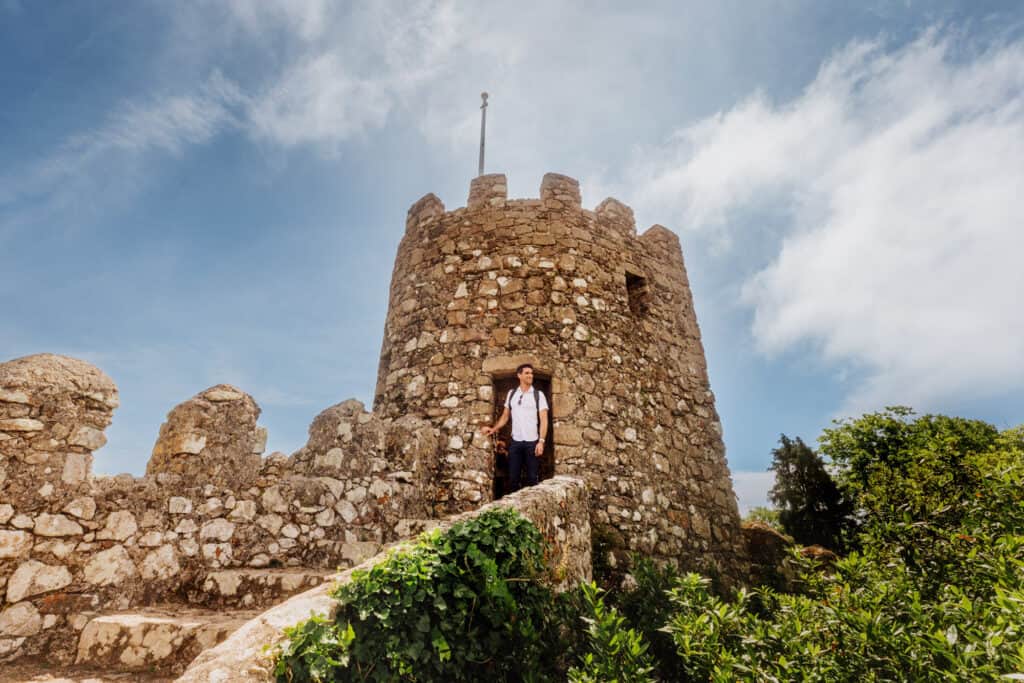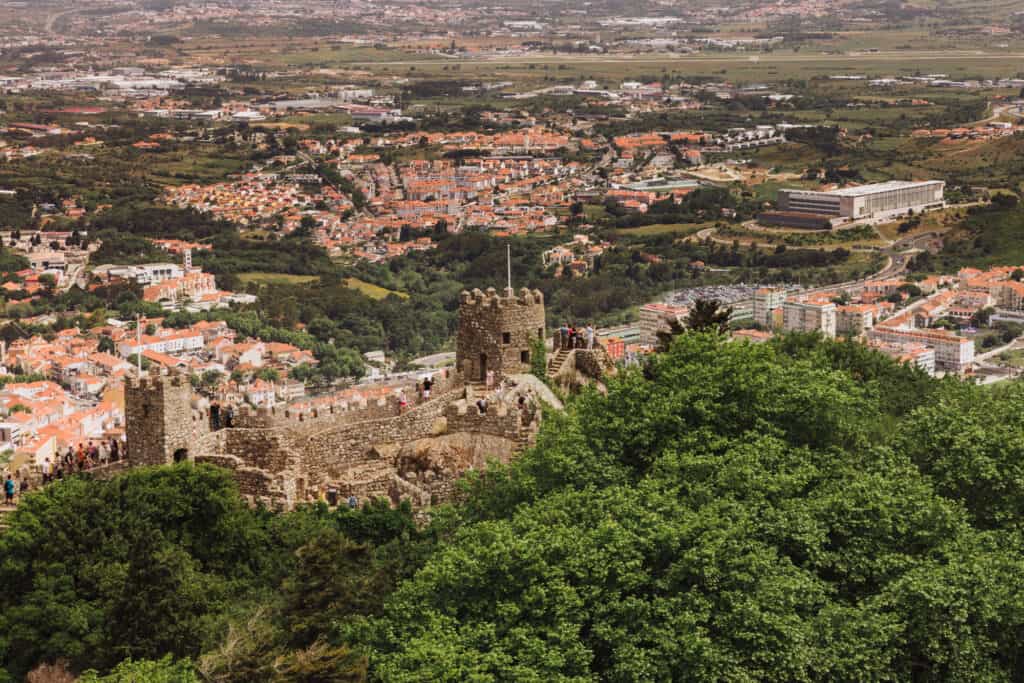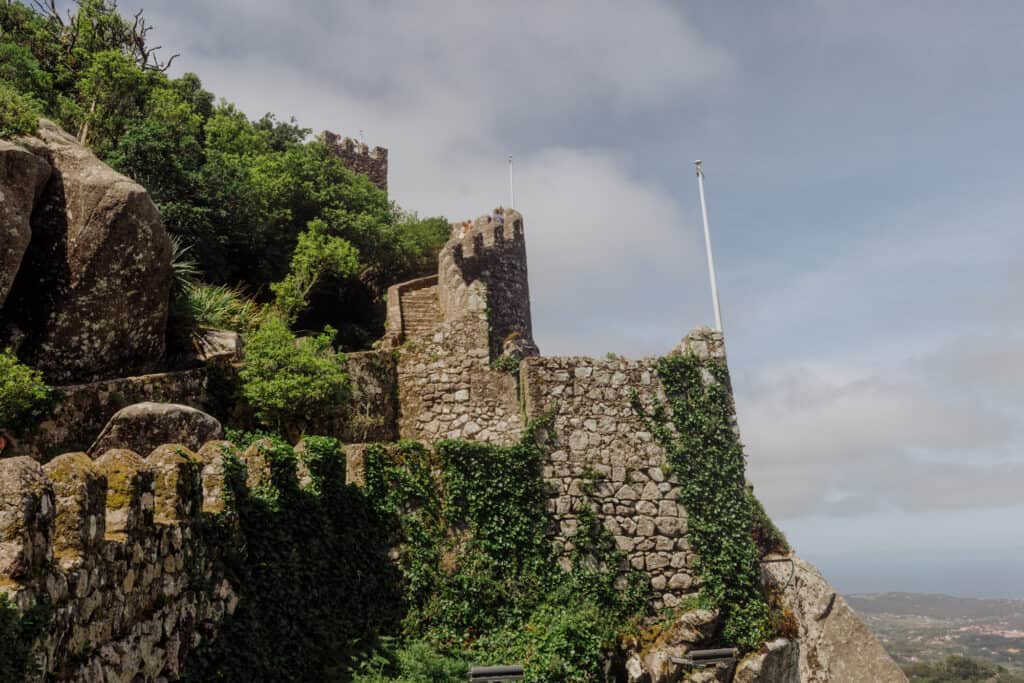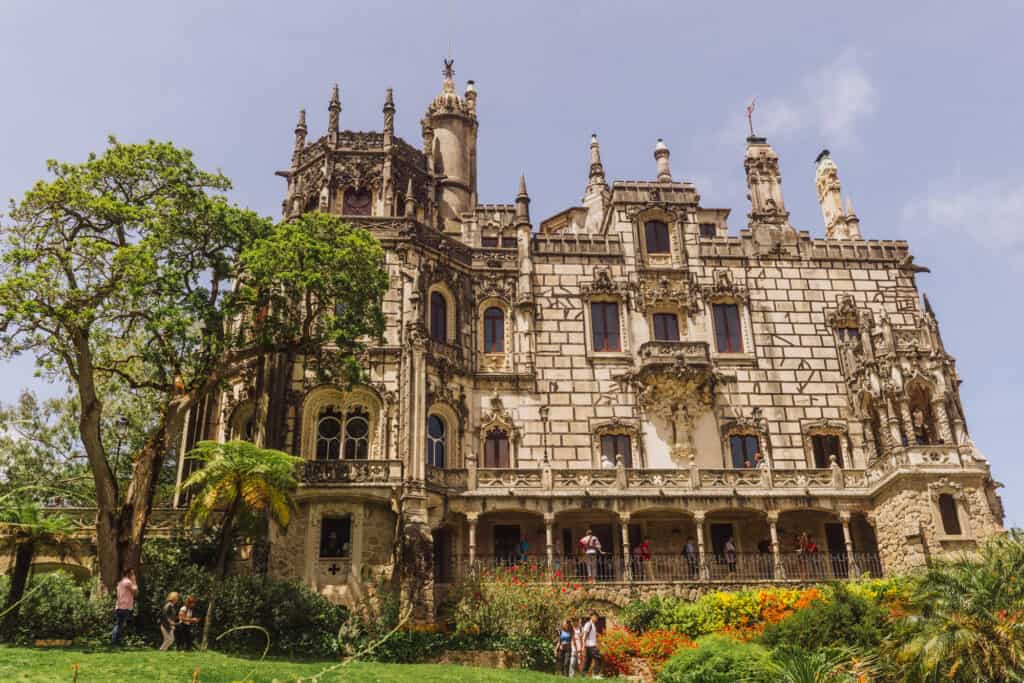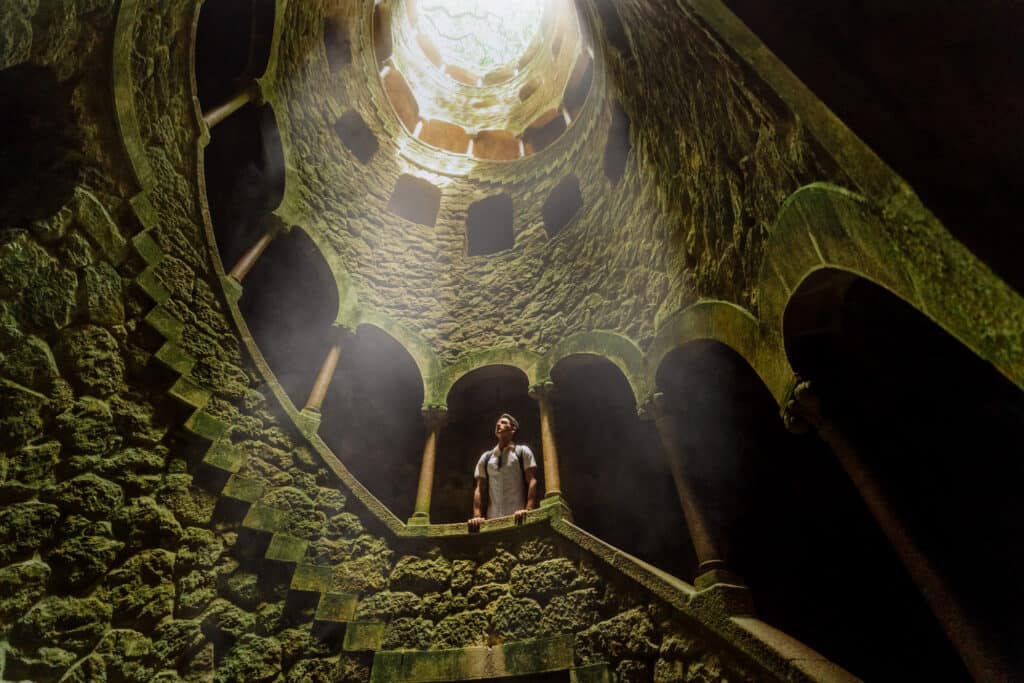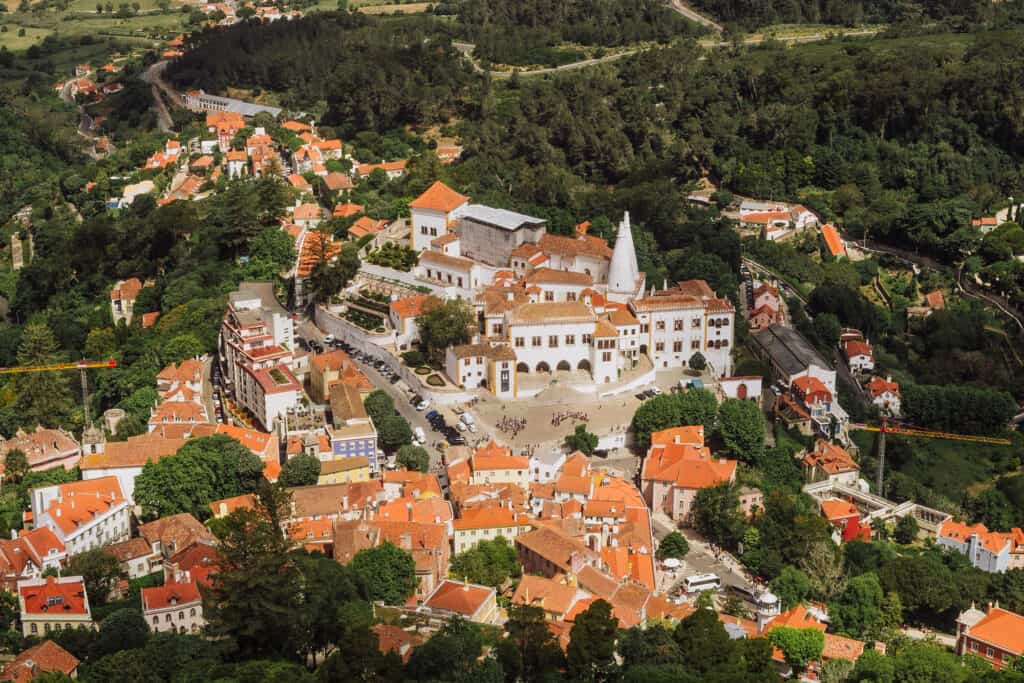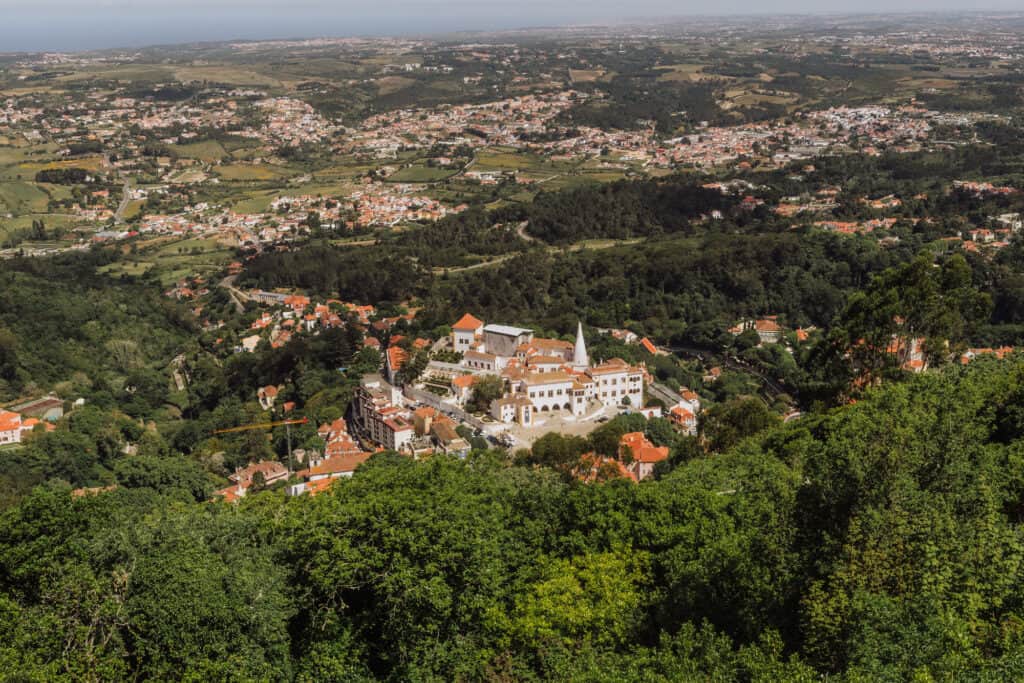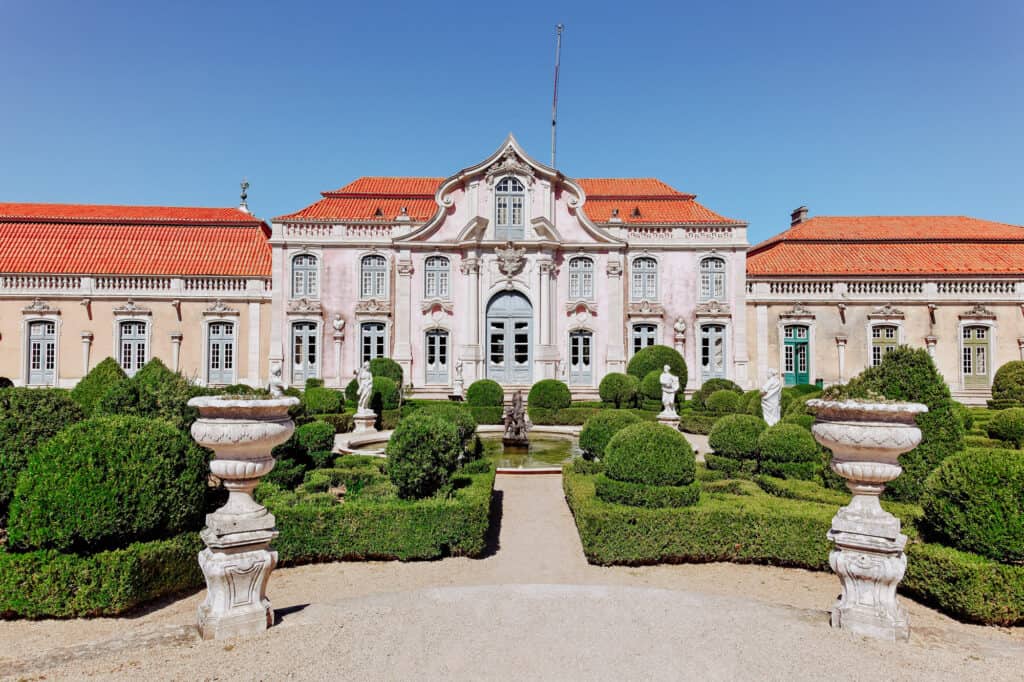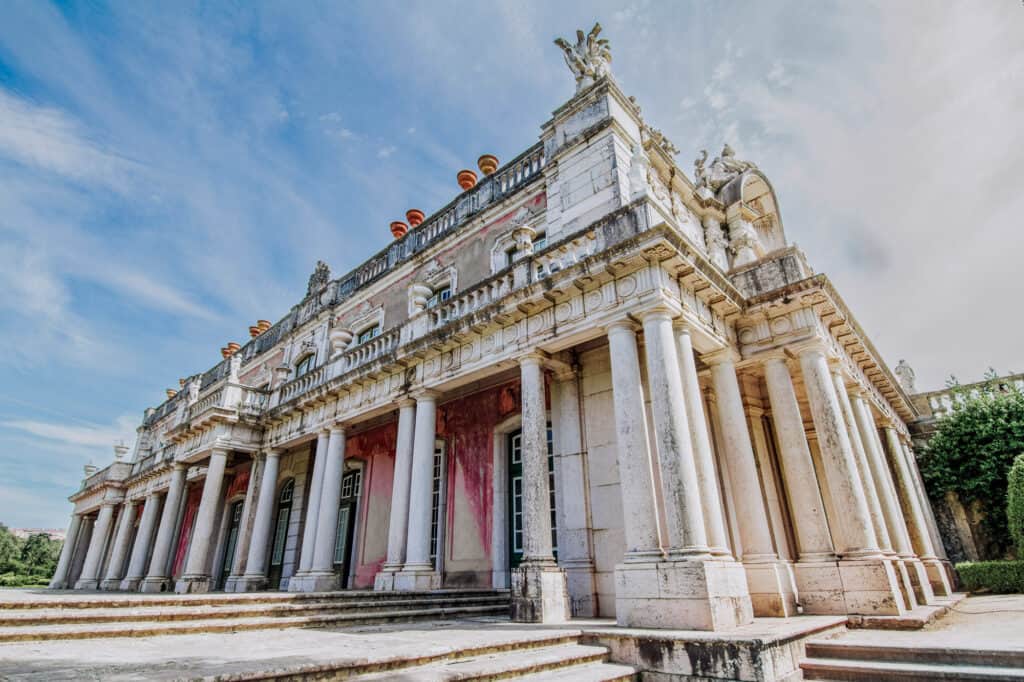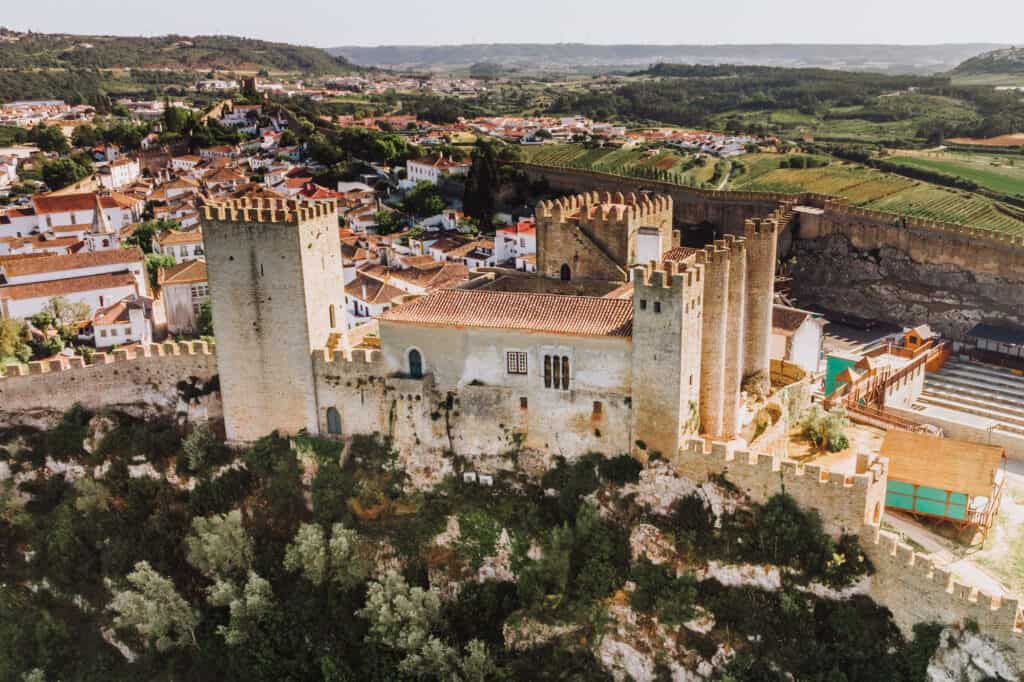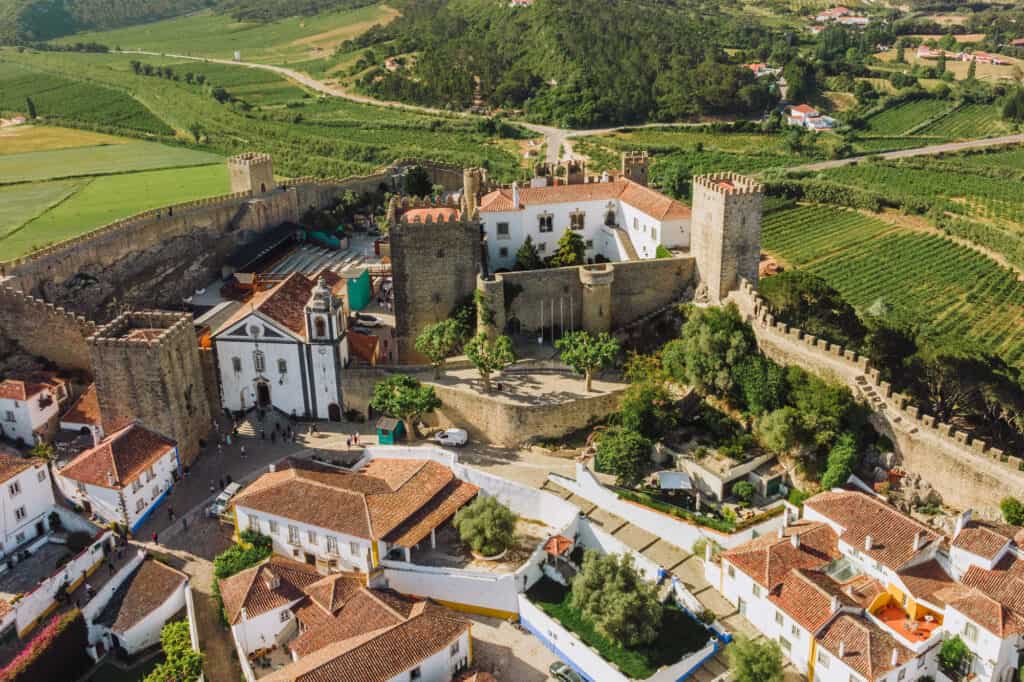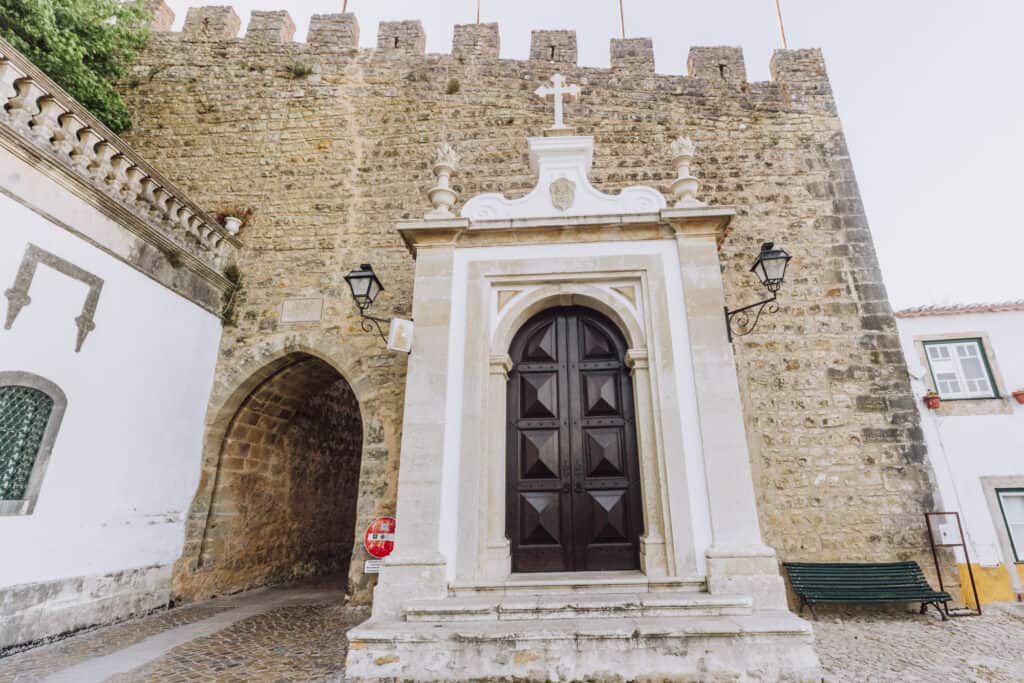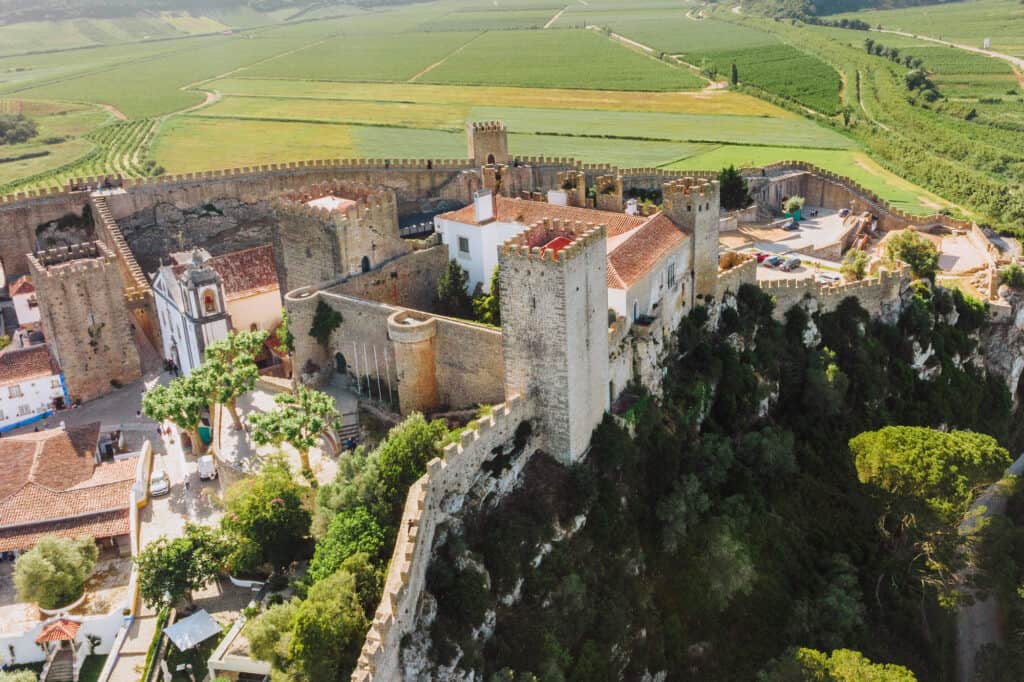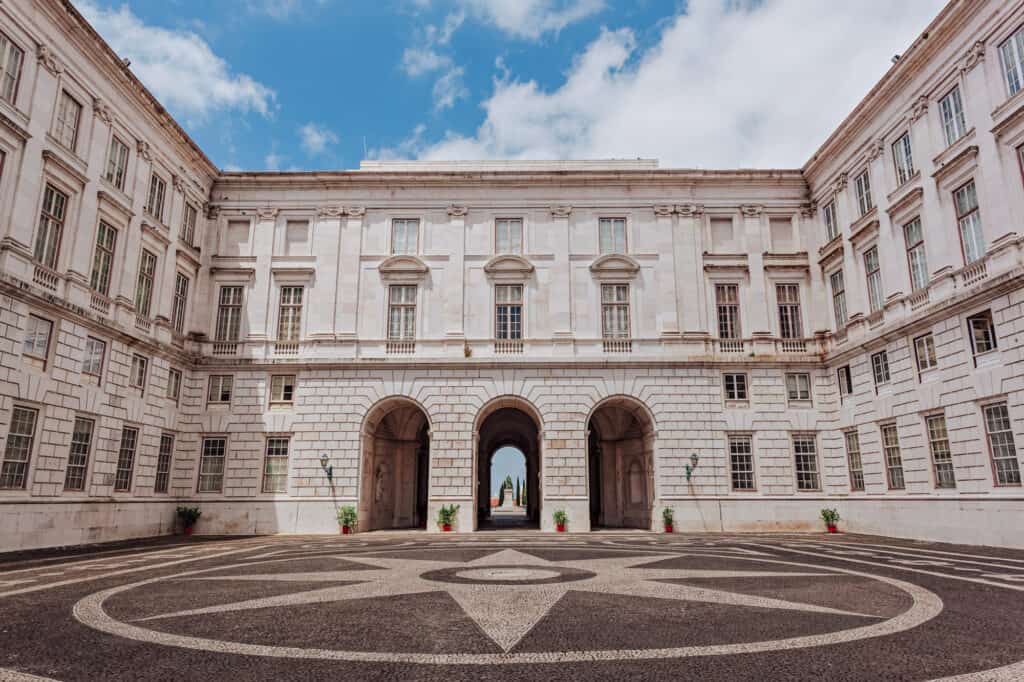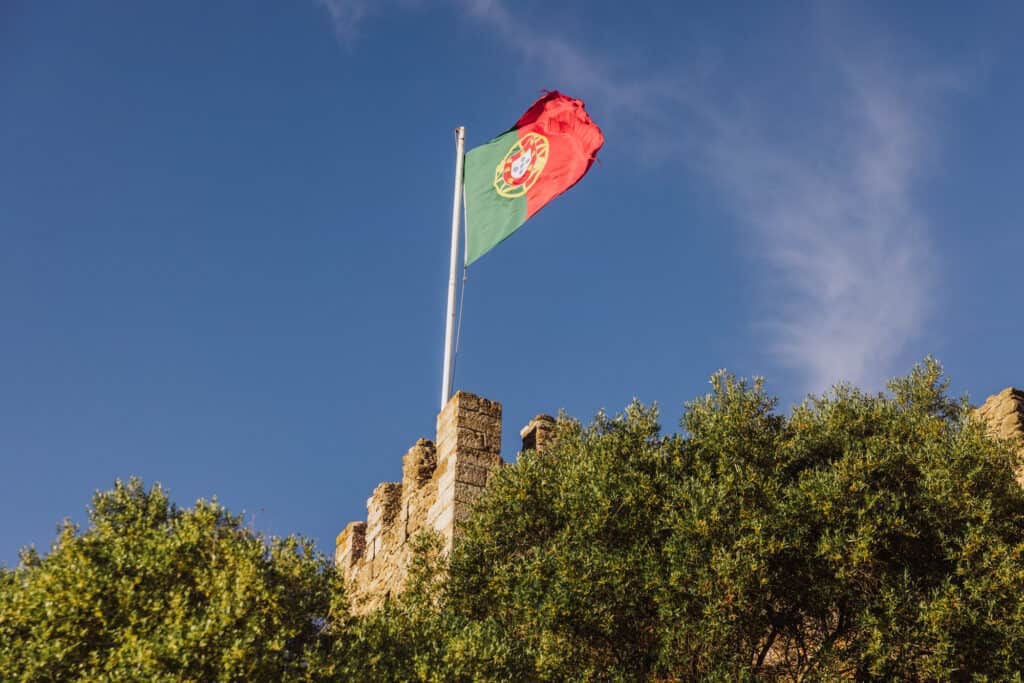Beautiful Portugal Palaces & Castles: 8 to Visit Near Lisbon
BY JARED DILLINGHAM
THE BEST PORTUGAL PALACES & CASTLES NEAR LISBON
There’s a lengthy list of Portugal’s palaces and castles to explore and discover.
This list of eight is a great start, during a visit to Lisbon. Each is easy to get to by train or other public transportation, and all are within one hour of Lisbon!
Tickets & Tours of the Portugal Palaces
One mistake I made (repeatedly) was under-estimating the crowds visiting Portugal’s palaces and castles.
There’s *immense* interest, so buying tickets ahead of your visit is a necessity! I was truly stunned by the lines forming early in the morning at several of the palaces and castles.
Here are several excellent tour options from Lisbon, each with 100% 5-star reviews:
➡️ Click to Book: Lisbon to Sintra Palaces
- A small group tour (max 8 people) to Sintra begins in Lisbon. The guide will take you on a day trip to Pena National Palace and Quinta da Ragaleira.
➡️ Click to Book: “Skip the Line” Tour to Pena Palace
- This is a 5-hour afternoon tour from Lisbon to Sintra, with a guide who has “skip the line” access to Pena Palace
➡️ Click to Book: Private Tour of Sintra
- Your private guide will pick you up at your hotel in Lisbon, and take you on a custom tour of Sintra and its palaces.
➡️ Click to Book: Private Tour of Ajuda & Queluz Palaces
- A private guide will take you to the gardens and Palace of Queluz, and the Ajuda Palace in Lisbon.
➡️ Click to Book: Private Tour of Moorish Castle / Pena Palace
- A private guide will take you to the Moorish Castle in Sintra, along with Pena Palace.
➡️ Click to Book: Lisbon Walking Tour + St. George’s Castle
Here are two links for tickets to a couple of the Portugal palaces I’ll talk about down below:
Castelo de St. Jorge in Lisbon
Pena Palace in Sintra
1. Castelo de St. Jorge (Lisbon)
If you’re based in Lisbon, the first Portugal palace I’d head to is the famous Castelo de São Jorge, or St. George’s Castle. It’s a historic fortress built on a hilltop in the heart of Lisbon.
Castelo de São Jorge is one of the city’s most iconic landmarks, and it offers panoramic views of the surrounding areas, including the Tagus River and the historic neighborhoods of Lisbon. Making it one of your first stops will help you get a better grasp of Lisbon’s layout.
The Cost to Visit Saint George’s Castle
Tickets are 15 Euros each, and I’d definitely buy them before you visit. Buying tickets to the castle the day-of your visit is fine, but buy online so you don’t have to wait in the lengthy line.
It’s an enjoyable walk up from the Rossio neighborhood, where many of Lisbon’s hotels are located.
The History of Saint George’s Castle
The castle’s history dates back over two millennia. It was initially built by the Romans in the 2nd century BC, but its strategic location had been recognized even earlier, with evidence of earlier settlements on the site dating back to the 6th century BC!
During the Moorish rule, the castle was fortified and became a significant defensive structure. In 1147, the castle was conquered by Afonso Henriques, the first King of Portugal, during the Christian Reconquista. From that point on, it became a royal residence.
These days you can visit and climb all over the castle’s sturdy rock walls, and towers. The entrance is guarded by the imposing Gate of Almada, which leads to a vast courtyard. Inside, visitors can explore the archaeological site, which reveals layers of history, including the remnants of Roman, Moorish, and medieval structures.
As I mentioned off the top, one of the highlights of St. George’s Castle is the panoramic view it offers. From the castle’s ramparts, visitors can enjoy breathtaking vistas of Lisbon’s historic center, including the Alfama neighborhood, and other landmarks like the Sé de Lisboa (Lisbon Cathedral).
The hours at the castle change, but it’s usually open until after 9:00pm in the warmer summer months (after sunset).
I was pleasantly surprised by the cafe serving drinks inside near one of the viewpoints. The $5 drinks were nicely priced!
You’ll also find a flock of peacocks crying out and roaming the grounds, usually around the moat and the entry courtyard.
The castle’s strategic position makes it an excellent viewpoint to appreciate the city’s layout, and it’s a popular spot to gather for sunsets.
As a side-note, for a free view of the sunset, you can check out the lengthy patio nearby at the Miradouro de Santa Luzia!
2. Pena Palace (Sintra)
I know I said it earlier, but let me repeat: The crowds at Pena Palace in Sintra will shock you. For planning purposes, get up early and get to Sintra as soon as it opens!
The Pena Palace, or Palácio da Pena, is a strikingly colorful and eclectic palace located in Sintra, Portugal. It’s perched on top of a hill in the Sintra Mountains, overlooking the town and offering breathtaking views of the surrounding landscape. The Pena Palace is considered one of the most remarkable examples of Romantic architecture in Europe.
How to get to Pena Palace from Lisbon
Getting to Sintra and Pena Palace is remarkably easy from your hotel in Lisbon!
Head to Rossio Station, and make sure you’re at the big train station (not the Metro/underground subway nearby).
Get there early, since long lines will form at the ticket machines. The train from Lisbon to Sintra usually runs every half-hour or so.
The Train from Lisbon to Sintra
The cost of a train ride to Sintra (a rail card plus fare) will be around 2.30 Euros, so it’s a great deal!
Rossio Station only has five tracks, so you’ll easily find the right platform.
It’s about a 40-minute train ride from Lisbon’s Rossio Station to Sintra, making 14 stops along the way. By comparison, the drive is 30 kilometers, and it’ll also take 40 minutes. It’s much easier to take the train!
How to get from Sintra Station to Pena Palace
At the train station, you’ll see several buses marked “434.” Each of these runs a loop, to Pena Palace, the Moorish Castle, and the town center in Sintra. The bus ticket is about 12 Euros for a day pass and unlimited use.
The other option is Uber. You can call an Uber right to the Sintra Station, and be at Pena Palace in 15 minutes. The cost will be about 7 Euros!
Other people take tuk-tuks up the hill to the palace.
Pena Palace Gardens
For $8 you can tour the extensive gardens surrounding Pena Palace. It’s far less crowded than the palace grounds themselves.
The History of Pena Palace
The palace’s origins date back to the Middle Ages when a chapel dedicated to Our Lady of Pena was built on the site. However, in the 19th century, King Ferdinand II of Portugal initiated a massive restoration and expansion project, transforming the chapel into a grand palace. King Ferdinand II was renowned for his artistic sensibilities and played an active role in the palace’s design, drawing inspiration from various architectural styles and influences.
The Pena Palace is known for its colorful facades, adorned with tiles and decorative motifs, creating a fairy-tale-like appearance.
Inside the palace, visitors can explore various rooms, including the Royal Family’s private quarters, the dining room, and the opulent ballroom. The interior reflects the Romantic style, with richly decorated walls, ornate ceilings, and elaborate furnishings, all creating a sense of grandeur and luxury.
The palace is surrounded by extensive parkland, known as the Pena Park, which covers over 200 hectares. The park is a beautiful combination of landscaped gardens, winding paths, and wooded areas.
The Pena Palace and Park together form part of the Sintra Cultural Landscape, a UNESCO World Heritage Site.
3. Moorish Castle (Castelo dos Mouros)
The Moorish Castle, also known as the Castle of the Moors, is a historic fortress located in Sintra, Portugal. It is situated on a hilltop overlooking the town and offers panoramic views of the surrounding countryside.
How to get to the Moorish Castle from Lisbon
The Moorish Castle can be combined with a visit to Pena Palace. They’re on neighboring hilltops in Sintra, and you can walk between them.
So, take the train from Rossio Station in Lisbon to Sintra Station, and then take the tourist loop bus (#434) or grab an Uber or tuk-tuk to take you to the castle entrance.
The Cost to Visit the Moorish Castle
Tickets to the Moorish Castle are about $8. While it’s not as crowded as Pena Palace, I’d still buy them ahead of time.
History of the Moorish Castle
The Moorish Castle dates back to the 8th and 9th centuries, when it was built as a strategic military stronghold. Its location on the hill provided a vantage point for monitoring the surrounding region.
The Moorish Castle consists of fortified walls, towers, and battlements that stretch over a considerable area. The walls follow the contours of the hill, adapting to its irregular shape.
Over the centuries, the castle underwent various modifications and expansions under different rulers. It was abandoned by the 19th century, before it was restored and preserved.
Today, visitors can explore the castle’s impressive walls and towers, climb the fortified battlements, and enjoy breathtaking views of the Sintra Mountains and the surrounding countryside.
4. Quinta da Regaleira
Quinta da Regaleira is a stunning estate located near the historic center of Sintra. It is known for its magnificent palace and enchanting gardens, which are a UNESCO World Heritage Site.
How to get to Quinta da Regaleira
A visit to Quinta da Regaleira in Sintra can be combined with a day trip to the Pena Palace and/or the Moorish Castle.
So, again, take the train from Rossio Station in Lisbon to Sintra Station, and then tourist bus #434 or an Uber or tuk-tuk to the Quinta da Regaleira.
If you’re already at the Moorish Castle, you can take an Uber or taxi down the hill to Quinta da Regaleira for about 5 Euros.
The Cost to Visit Quinta da Regaleira
It’s about $12 for a ticket into the estate. I’d imagine most of that money goes into maintaining the expansive grounds and gardens!
The History of Quinta da Regaleira
The estate was built in the late 19th and early 20th centuries and is considered one of the most unique among the Portugal palaces.
The Quinta da Regaleira was designed by the Italian architect Luigi Manini, who incorporated elements of Gothic, Renaissance, and Manueline architectural styles. The palace itself is an intricate and fascinating structure, adorned with decorative facades, turrets, and symbols of mysticism.
However, it is the gardens of Quinta da Regaleira that truly captivate visitors. The gardens are a labyrinthine network of paths, tunnels, grottoes, and wells, designed to represent various mystical concepts and initiation rituals.
The most famous feature is the “Initiation Well” or “Inverted Tower,” which is a deep underground well with spiral staircases leading to the bottom. It is an awe-inspiring sight and is believed to symbolize a journey to the center of the Earth or a passage through different realms.
5. National Palace of Sintra
The Palácio Nacional de Sintra, also known as the Sintra National Palace, is one of the most prominent and well-preserved medieval royal residences in the country.
How to Get to the National Palace of Sintra
The Palácio Nacional can be combined with a visit to the other palaces and castles in Sintra.
From Sintra Station, it’s a short 10-minute walk through town.
The Cost to Visit the National Palace of Sintra
The entry fee is 10 Euros for adults.
The History of the National Palace of Sintra
This beautiful Portugal palace has a rich history dating back to its beginnings as a Moorish castle. It later became a royal residence for the Portuguese monarchs during the Middle Ages and the Renaissance.
The National Palace became the preferred summer retreat for the royal family in Portugal.
With its bright white facade, you can tell: the palace has undergone several modifications over the centuries, resulting in its current appearance.
One of the most popular areas within the palace is the Coats of Arms Room (Sala dos Brasões). It boasts a stunning ceiling adorned with 72 coats of arms representing the Portuguese noble families.
The Sintra National Palace has been classified as a UNESCO World Heritage Site since 1995.
6. Queluz Palace
Queluz Palace, also known as the National Palace of Queluz, is a historic royal residence located in Queluz, a town 14 kilometers northwest of the city of Lisbon.
This Portugal palace is often referred to as the “Portuguese Versailles” due to its similarities to the Palace of Versailles in France.
How to get to Queluz Palace
The palace is an easy half-hour ride from Lisbons’ Rossio Train Station.
Hop on the line toward Sintra, and get off six stops later at Queluz-Belas.
From the train station, it’s a one kilometer walk south through the streets to the palace.
The Cost to Visit Queluz Palace
The palace and gardens are open from 9:00am to 6:00pm.
The cost to visit both is 10 Euros.
History of Queluz Palace
Construction of Queluz Palace began in the late 18th century during the reign of King Pedro III of Portugal. Initially intended as a summer retreat, it gradually evolved into a grand palace.
Queluz Palace boasts stunning gardens that cover an extensive area surrounding the main building. The gardens include ornate fountains, statues, and geometrically shaped hedges.
The interior of Queluz Palace features lavishly decorated rooms, including the Throne Room, the Ambassadors’ Room, and the Music Room.
In the early 19th century, during the French invasion of Portugal, the royal family sought refuge in Brazil, turning Queluz Palace into a secondary royal residence. The palace was damaged, but later restored.
Today, visitors can explore the palace’s grand rooms, stroll through the meticulously maintained gardens, and learn about the history of the Portuguese monarchy.
7. Obidos Castle (Castelo de Obidos)
At the heart of Obidos stands its iconic castle, the Castelo de Obidos! The castle, perched at the top of the hill, is a significant landmark of the region.
How to get to Obidos from Lisbon
While you can take a train-bus combination from Lisbon, the easiest way to get to Obidos is to drive. It’s an easy, highway drive, one-hour drive north of the city.
I used Discover Cars to find our rental, since the search allows you to comb through all available rental companies:
If you’re staying in a hotel downtown, it’s probably easier to rent from one of the rental car locations in the central part of the city.
There’s no train to Obidos from Lisbon, but you can take a train from Lisbon’s Oriente Station to the nearby city of Caldas da Rainha. The train ride usually takes around 1 hour and 20 minutes. From Caldas da Rainha, you can take an Uber to Obidos, which is 10 kilometers (6 miles) away.
The Cost to Visit Obidos Castle
If you’re driving, bring change to put into the parking lot machines! As I write this, the machine does not accept credit card for payments, so you’ll need coins.
They’ll charge you a nominal fee by the hour to park. Otherwise, there’s no cost to enter Obidos’ fortified walls!
The History of Obidos Castle
The original structure served as a defensive fortress for the Moors beginning in the 8th Century. After the Christian reconquest in the 12th century, the castle was renovated and became an integral part of the region’s defense system.
During the medieval period, it was gifted to Queen Isabel of Portugal as a wedding present in the 13th century. The town’s medieval character is still evident today through its preserved buildings, castle walls, and narrow alleys.
In modern-day times, it’s a tourist attraction, museum, and a hotel. In the 20th century, the castle underwent a transformation and was converted into a luxurious hotel, known as the Pousada do Castelo de Óbidos. The hotel retains the castle’s historic ambiance while offering modern amenities and accommodations for visitors.
The interior of the castle is beautifully restored. The rooms showcase traditional decor, including antique furniture, tapestries, and artwork.
The castle’s strategic hilltop location provides stunning views of the town of Obidos, the surrounding vineyards and countryside, and the Atlantic Ocean in the distance.
8. Portugal’s Palace of Ajuda (Palácio Nacional)
You can visit the former royal palace in Lisbon, also known as the Palácio Nacional de Lisboa or Palácio da Ajuda. The palace is located in the Ajuda neighborhood of Lisbon and is one of the must-see attractions in the city.
The Cost to Visit the Royal Palace
The cost to visit is 5 Euros. The Royal Treasure Museum is a 10 Euro ticket, while the garden is 2 Euros.
The palace is usually closed on Thursdays.
History of the Royal Palace
The Palácio da Ajuda was originally built in the 18th century as a residence for the Portuguese royal family.
The palace closed in 1910, when the royal family went into exile and the Republic was formed. Decades later, it reopened as a museum in 1968.
Visitors today can take guided tours of the palace to learn about its history and gain insights into the lives of Portuguese kings and queens.
Where to Stay to Visit Portugal Palaces
Since you’ll be relying on the train from Rossio Station to get to several of the palaces outside Lisbon, I’d stay near Rossio Square.
It’s a vibrant neighborhood, full of restaurants and shopping.
You can use this interactive map to look around at the options for your dates:
The Best Time to Visit Portugal Palaces
Crowds at Portugal’s palaces and castles swell during the summer months. From mid-May through the end of August, it’s borderline unenjoyable to visit these historic estates. Still, that’s when most people have vacations!
In an ideal world, spring and fall are the best times of the year to visit the Portugal palaces and other iconic estates.
Wrap: The Best Portugal Palaces
Going into these visits, I just assumed Pena Palace in Sintra would be my favorite Portugal palace.
Frankly, as unique and beautiful as it is, the crowds were too big there for me!
I really loved our day in Obidos, and the Moorish Castle in Sintra also surpassed expectations. Plus, the easiest to get to, Saint George’s Castle right in Lisbon, is a gem with an unmatched view of the city.
